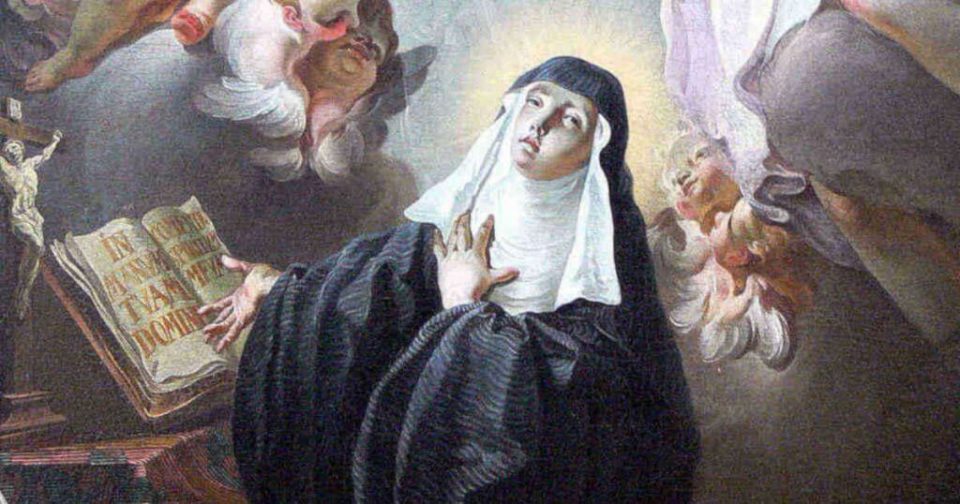Life of Saints: Saint Scholastica

Saint Scholastica, Virgin
c. early 547th century - XNUMX
February 10-Memorial (Optional memorial if Lent week)
liturgical Color: White (purple if Lent in the week)
patron of nuns, convulsive children, education and books
A mysterious and cultured woman helps initiate western monasticism
Saint Scholastica was born in the decades after the last western emperor was forced to abandon the dilapidated city of Rome in 476. Power was concentrated in the East, in Constantinople, where the real action took place. Many centuries passed until the Renaissance once again covered Rome in its classical glory. But what happened in Western Europe between the end of the Roman era in the fifth century and the dawn of the Renaissance in the fifteenth century? Monasticism happened. Armies of monks founded countless monasteries that traversed Europe far and wide like pearls of a rosary. These monasteries sank their roots in the native soil. They became centers of learning, agriculture and culture which naturally gave birth to cities, schools and universities employees who created medieval society.
San Benedetto and his twin sister, Santa Scolastica, are the male and female sources of that wide river of monasticism that has made its way so deeply into the landscape of the western world. Yet very little is known with certainty of his life. Pope St. Gregory the Great, who reigned from 590 to 604, wrote about these famous twins about half a century after their death. He based his story on the testimony of abbots who personally knew Scholastica and his brother.
Gregorio's biographical comment underlines the warm and faith-filled closeness between the brothers. Scholastica and Benedetto visited each time their cloistered lives were allowed. And when they met they talked about the things of God and Heaven that awaited. Their mutual affection was born from their common love for God, showing that correct understanding and love for God is the only source of true unity in any community, be it the micro-community of a family or the mega-community of a whole nation.
The Benedictine monastic family tried to replicate the common knowledge and love of God that Scholastica and Benedetto lived in their own family. Through common programs, prayers, meals, singing, recreation and work, the communities of monks who lived according to the Benedictine Rule and who still live it, have tried to replicate the well-ordered and fruitful life of a large, full of faith family. Like a well-trained orchestra, all the monks united their talents in overwhelming harmony under the abbot's wand, until their joint effort spread to the beautiful churches, music and schools that continue today.
The gravestones in the monastery cemeteries often have no names engraved on them. Polished marble can simply say: "A holy monk". Anonymity is itself a sign of holiness. What matters is the body of the wider religious community, not the individual who was only one of the cells of that body. Saint Scholastica died in 547. Her tomb is known, marked and celebrated. She is buried in a luxurious sepulcher in an underground chapel of the Monte Casino monastery in the mountains south of Rome. It is not anonymous in its resting place, like so many monks and nuns. But it is anonymous as so few details illustrate its character. Maybe it was by design. Maybe it was humility. She and her brother are important religious figures whose mark is still imprinted on Western culture. Yet she is a mystery. It is known for its heritage, and sometimes an inheritance is enough. In his case it is definitely enough.
Saint Scholastica, you established the female branch of the Benedictine Religious Order, and so you gave Christian women their communities to govern and govern. Help everyone who invokes your intercession to remain anonymous and humble even when they develop great plans for God and His Church. You are big and you are not known. Help us desire the same.